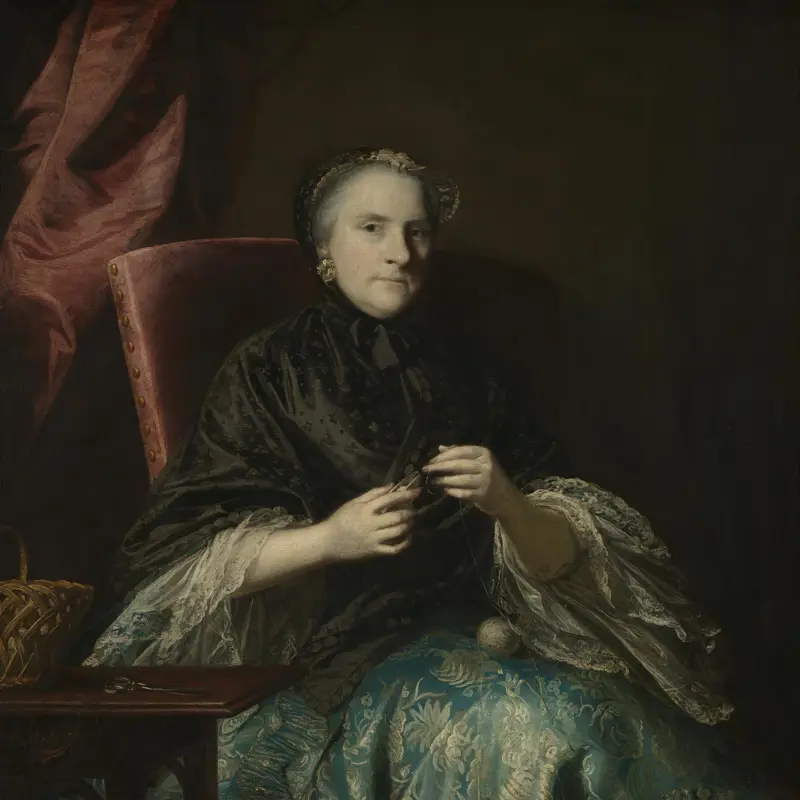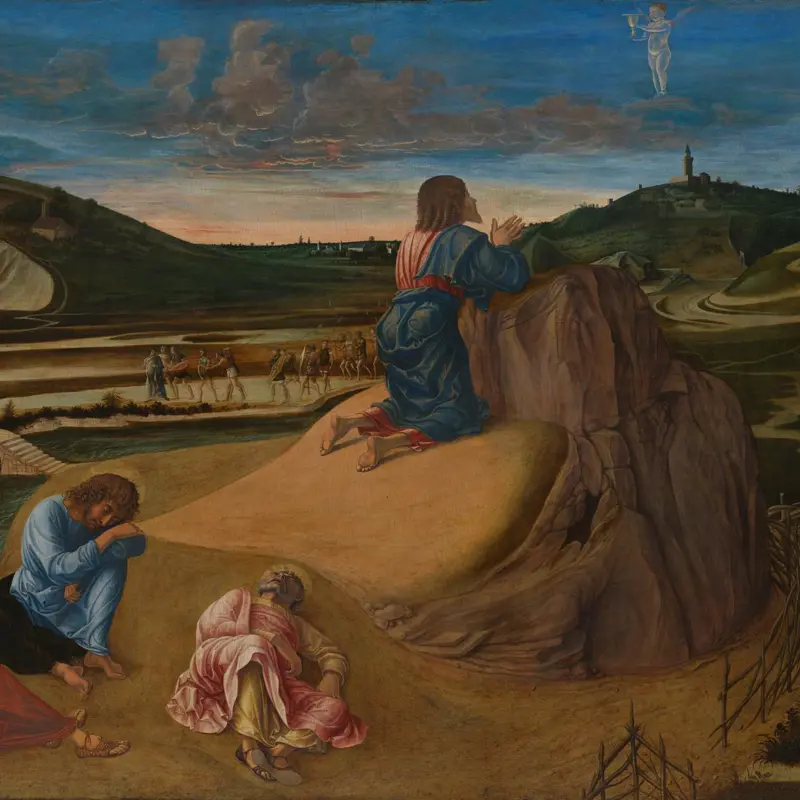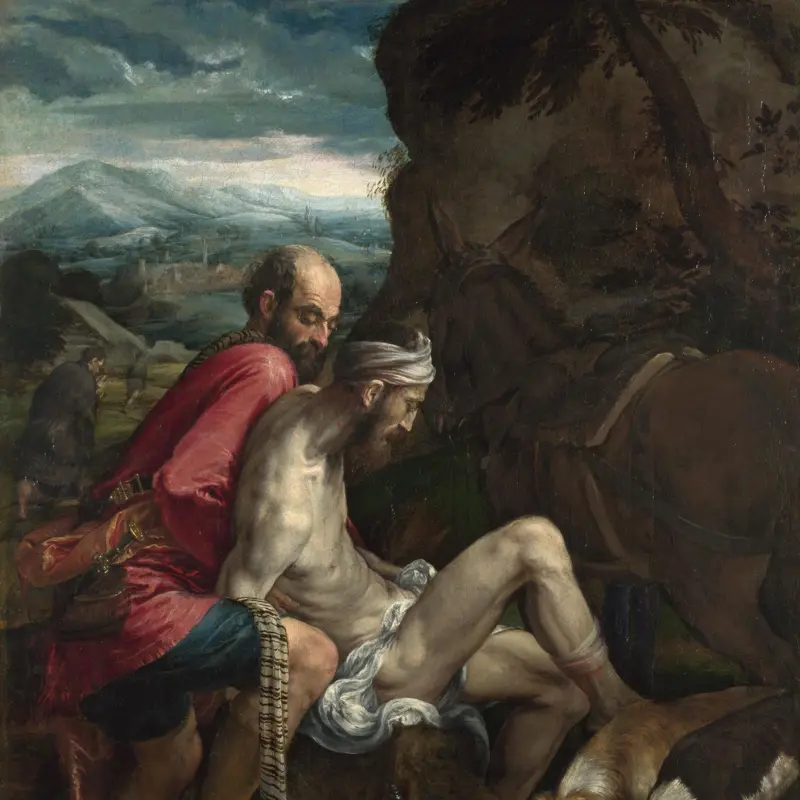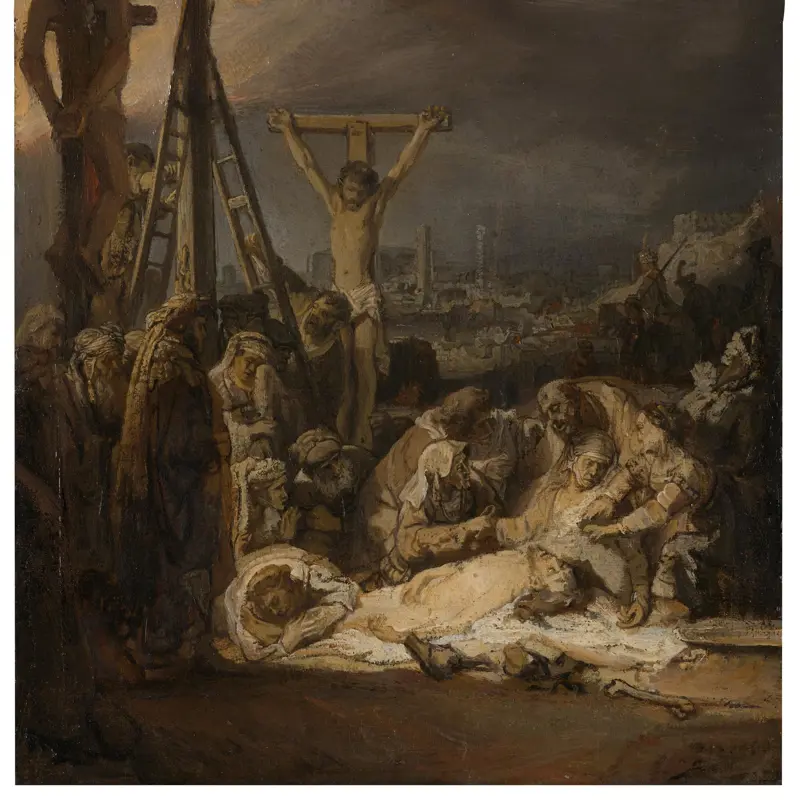Reynolds was the leading English portraitist of the 18th century. Through study of ancient and Italian Renaissance art, and of the work of Rembrandt, Rubens and Van Dyck, he brought great variety and dignity to British portraiture.
Reynolds was born at Plympton in Devon, the son of a headmaster and fellow of Balliol College, Oxford: a more educated background than that of most painters. He was apprenticed in 1740 to the fashionable London portraitist Thomas Hudson, who also trained Wright of Derby. He spent 1749-52 abroad, mainly in Italy, and set up practice in London shortly after his return.
He soon established himself as the leading portrait painter, though he was never popular with George III. He was a key figure in the intellectual life of London, and a friend of Dr Johnson. When the Royal Academy was founded in 1768, Reynolds was elected its first President. Although believing that history painting was the noblest work of the painter, he had little opportunity to practise it, and his greatest works are his portraits.
His paintings are not perfectly preserved due to faulty technique. The carmine reds have faded, leaving flesh-tones paler than intended, and the bitumen used in the blacks has tended to crack.
Sir Joshua Reynolds
This person is the subject of ongoing research. We have started by researching their relationship to the enslavement of people.
Biographical notes
British painter and first president of the Royal Academy.
Slavery connections
A Black servant in Reynolds’ household was probably a formerly enslaved person and was said to have been brought to England by the family of Valentine Morris (1727-1789, ex-Governor of St Vincent and owner of estates in Antigua).
Reynolds painted George Grenville, Marquess of Buckingham, and his Family (National Gallery of Ireland), which includes an enslaved servant.
He painted a portrait now thought to be of Francis Barber, servant of English writer Samuel Johnson and a former enslaved person in the possession of Colonel Richard Bathurst. Tate owns a copy after Reynolds’s picture; according to Tate’s website, its previous titles, including A Young Black, ‘may suggest that as a Black man, Barber was being treated as an artistic subject, rather than as an individual’. (‘A Young Black Man (?Francis Barber)’, Tate [online], June 2021, <https://www.tate.org.uk/art/artworks/reynolds-a-young-black-man-francis-barber-t01892> accessed 5 August 2021.)
Abolition connections
Reynolds is reported to have given Thomas Clarkson (one of the eleven founders of the Society for Effecting the Abolition of the Slave Trade in 1787) ‘his unqualified approbation of the abolition of this cruel traffic’. (Thomas Clarkson, The History of the Rise, Progress, and Accomplishment of the Abolition of the African Slave-Trade by the British Parliament, 2 vols, London, 1808, vol. 1, 101.)
National Gallery painting connections
Painter: Reynolds painted NG111, NG681, NG1259, NG2077, NG5985 (Banastre Tarleton, q.v.).
Bibliography
D. Bindman, 'Subjectivity and Slavery in Portraiture' in A. Lugo-Ortiz and A. Rosenthal (eds.), Slave Portraiture in the Atlantic World, Cambridge 2013
History of Parliament Trust (ed.), The History of Parliament: British Political, Social & Local History, London 1964-, https://www.historyofparliamentonline.org/
Checked and not found
—
Item on publisher's website
A. Lugo-Ortiz and A. Rosenthal (eds.), Slave Portraiture in the Atlantic World, Cambridge 2013
D. Mannings, 'Reynolds, Sir Joshua', in J. Turner et al. (eds), Grove Art Online, Oxford 1998-, https://doi.org/10.1093/gao/9781884446054.article.T071710
Checked and found
—
Item on publisher's website
M. Postle, 'Reynolds, Sir Joshua', in C. Matthew et al. (eds), Oxford Dictionary of National Biography, Oxford 1992-, https://doi.org/10.1093/ref:odnb/23429
Checked and found
—
Item on publisher's website
UCL Department of History (ed.), Legacies of British Slave-ownership, London 2020, https://www.ucl.ac.uk/lbs/
Checked and not found
—
Item on publisher's website









